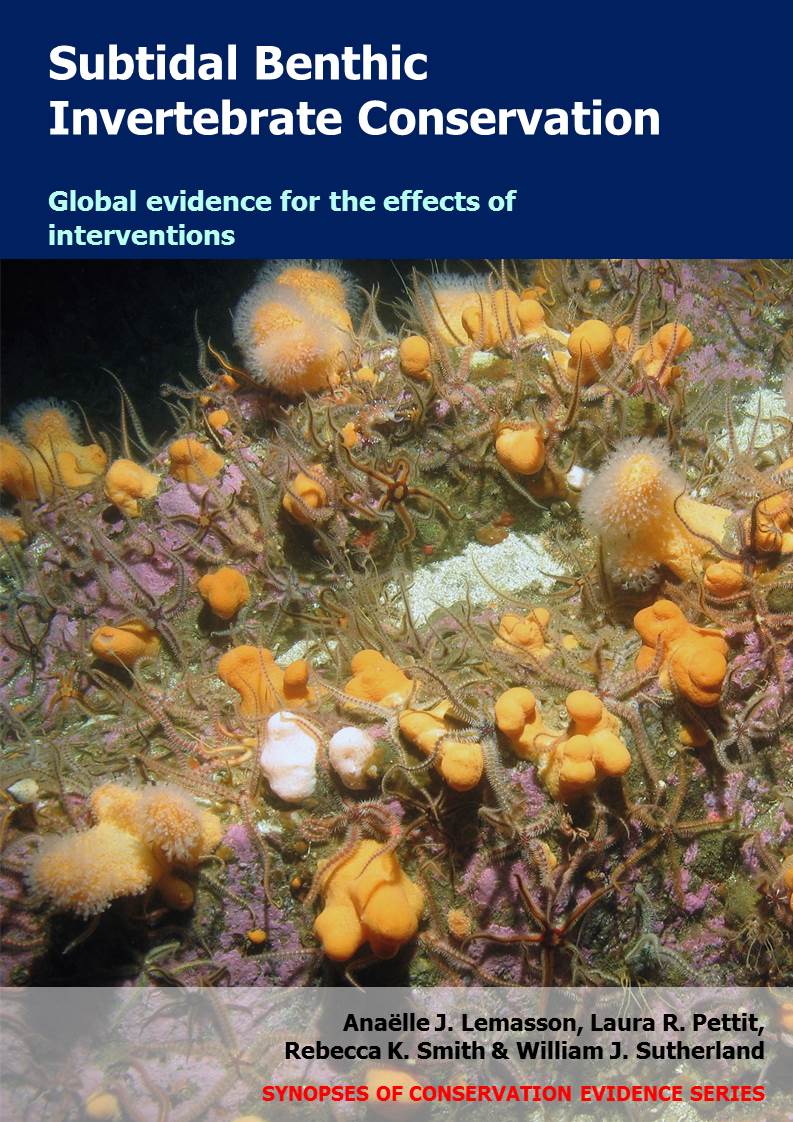Offset habitat loss from human activity by restoring or creating habitats elsewhere
-
Overall effectiveness category Unknown effectiveness (limited evidence)
-
Number of studies: 2
View assessment score
Hide assessment score
How is the evidence assessed?
-
Effectiveness
45% -
Certainty
20% -
Harms
0%
Study locations
Supporting evidence from individual studies
A study in 1990–1994 of an offset site in Delaware Bay, USA (Burton et al. 2002) found that a 0.7 ha artificial reef created to offset 57.4 ha of lost soft-sediment habitat had higher annual secondary production/unit area from sessile invertebrates, but lower total annual secondary production, compared to habitat similar to that lost. Annual secondary production/unit area at the offset artificial reef was 11–67 times higher than at soft-sediment habitat similar to that lost (2,000–12,000 kcal/m2/year vs 177 kcal/m2/year), but total annual secondary production was 1.3–7.6 times lower (13–77 million cal/year vs 100 million cal/year). The authors concluded that the artificial reef improved secondary production, but not enough reef was created to fully offset the lost habitat. An artificial reef was created in 1989 to mitigate the loss of mudflats elsewhere following the creation of a dredged material disposal site. Twice per summer in 1990–1994, sessile invertebrates growing on the artificial reef were identified and their biomass measured (see original paper for methods). As the mudflat habitat had already been lost, data for comparison were collected from similar soft-sediment habitats in 1990–1993 by the US Protection Agency and the Chesapeake Bay Program. For each habitat type, biomass data were used to estimate annual secondary production.
Study and other actions testedA study in 2004–2005 of three sites in one area of soft seabed in the Persian Gulf, Kuwait (Jones et al. 2007) found that restoring a 30 km2 area of low ecological value to offset 20 km2 of habitat lost to land reclamation led to the creation of 1.27 km2 of subtidal channels that were colonized by over 198 benthic invertebrate species within a year. Al-Khiran Pearl Sea City was constructed following a biodiversity offsetting approach by creating waterways, beaches and planted areas (mangrove, seagrass, saltmarsh). One waterway was opened to the sea in 2004. In 2005, invertebrates at three sites within the waterway were surveyed using a variety of methods (see original paper) including a 0.15 m3 sediment grab and a 50 m2 dredge. Invertebrates (>0.5 mm) were identified.
Study and other actions tested
Where has this evidence come from?
List of journals searched by synopsis
All the journals searched for all synopses
This Action forms part of the Action Synopsis:
Subtidal Benthic Invertebrate Conservation





)_2023.JPG)














